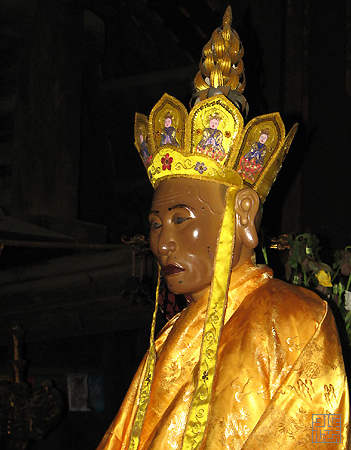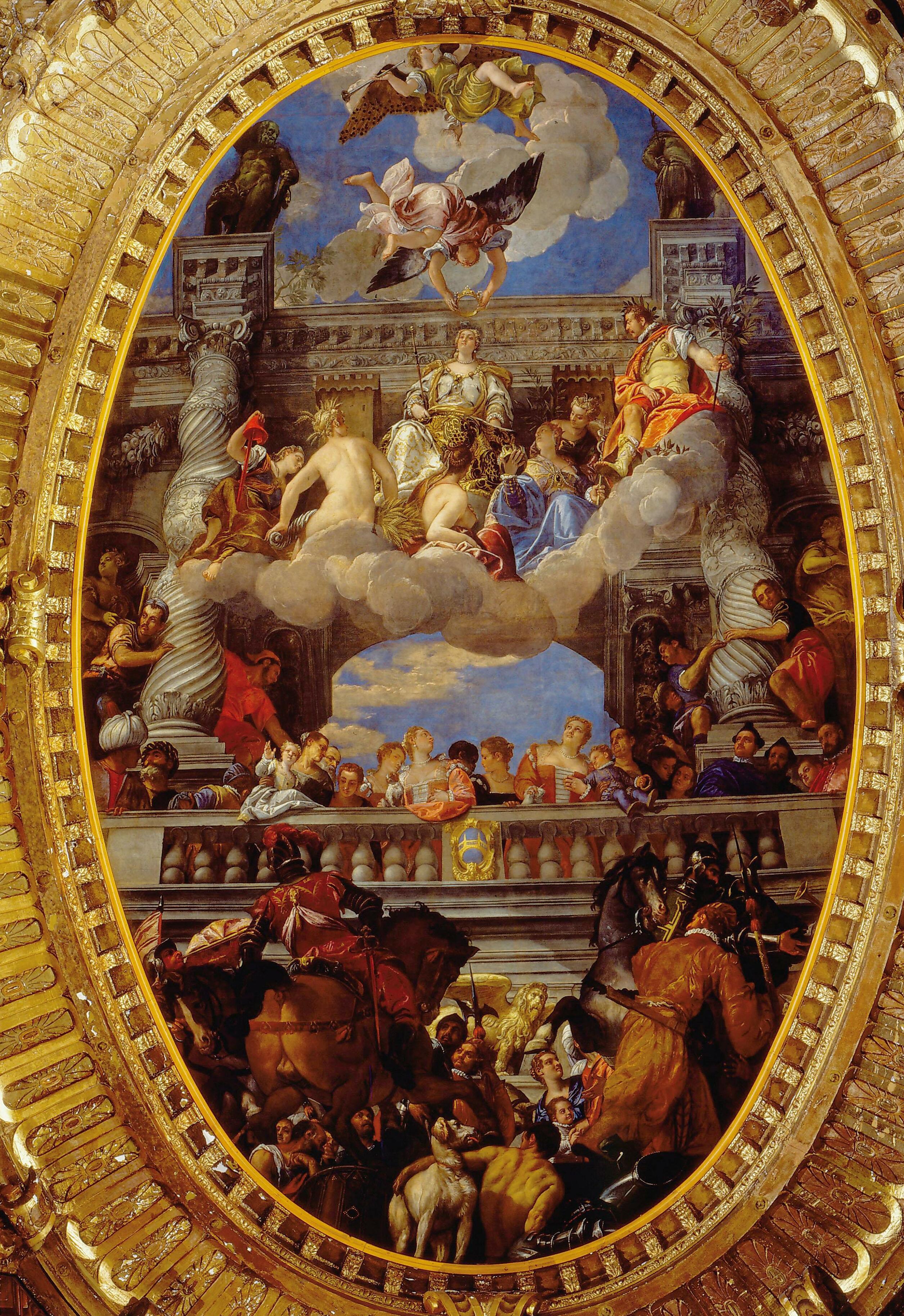|
Từ Đạo Hạnh
Từ Đạo Hạnh (chữ Hán: , 1072-1116) also Đức Thánh Láng (德聖𣼽), was a Vietnamese monk who lived at the Thầy Temple near modern Hanoi Hanoi ( ; ; ) is the Capital city, capital and List of cities in Vietnam, second-most populous city of Vietnam. The name "Hanoi" translates to "inside the river" (Hanoi is bordered by the Red River (Asia), Red and Black River (Asia), Black Riv .... Various folk legends are told about his life and powers. Today when puppeteers perform during the Thầy Temple Festival, on the seventh day of the third lunar month, they honor Từ Đạo Hạnh as their founder and patron deity.Van Huy Nguyen, Laurel Kendall - Vietnam: Journeys of Body, Mind, and Spirit - Page 234 2003 "Tu Dao Hanh, who lived as a monk at Thay Temple (Chua Thay) in the eleventh century, is regarded as the founder of this ... When puppeteers perform during the Thay Festival, they do honor to Tu Dao Hanh, their founder and patron deity, ..." References 107 ... [...More Info...] [...Related Items...] OR: [Wikipedia] [Google] [Baidu] |
Chữ Hán
( , ) are the Chinese characters that were used to write Literary Chinese in Vietnam, Literary Chinese (; ) and Sino-Vietnamese vocabulary in Vietnamese language, Vietnamese. They were officially used in Vietnam after the Red River Delta region was incorporated into the Han dynasty and continued to be used until the early 20th century. Terminology The main Vietnamese term used for Chinese characters is (). It is made of meaning 'character' and 'Han (referring to the Han dynasty)'. Other synonyms of includes ( , literally 'Confucianism, Confucian characters') and ( ) which was borrowed directly from Chinese. was first mentioned in Phạm Đình Hổ's essay ( ), where it initially described a calligraphic style of writing Chinese characters. Over time, however, the term evolved and broadened in scope, eventually coming to refer to the Chinese script in general. This meaning came from the viewpoint that the script belonged to followers of Confucianism. This is further s ... [...More Info...] [...Related Items...] OR: [Wikipedia] [Google] [Baidu] |
Thầy Temple
Thầy Temple ( or ''Master's Temple'') is a Buddhist temple in Quốc Oai District (formerly Hà Tây Province, now part of Hanoi), Vietnam. The temple is also known as ''Thiên Phúc Tự'' ("Temple of Heavenly Blessings"). The temple was established in the 11th century during the reign of Emperor Lý Nhân Tông of the Lý dynasty. It is dedicated to Zen master Từ Đạo Hạnh (1072–1116). It is one of the oldest Buddhist temples in Vietnam. It is well maintained by the monks. The temple is a center of pilgrimage during Tết. Geography The temple is located in Sài Sơn village, from Hanoi. It sits on the banks of an artificial lake, at the foot of the Sài Sơn Mountain, near Thăng Long Boulevard. History Từ Đạo Hạnh (also known as Minh Không) was a famous monk. He was the chief monk at the temple, a choreographer of traditional water puppetry, an inventor, and also a medical man and mystic in his village. The mystic acts associated with the monk include hi ... [...More Info...] [...Related Items...] OR: [Wikipedia] [Google] [Baidu] |
Hanoi
Hanoi ( ; ; ) is the Capital city, capital and List of cities in Vietnam, second-most populous city of Vietnam. The name "Hanoi" translates to "inside the river" (Hanoi is bordered by the Red River (Asia), Red and Black River (Asia), Black Rivers). As a Municipalities of Vietnam, municipality, Hanoi consists of 12 List of urban districts of Vietnam, urban districts, 17 Huyện, rural districts, and 1 District-level town (Vietnam), district-level town. The city encompasses an area of . and as of 2024 has a population of 8,718,000. Hanoi had the second-highest gross regional domestic product of all Vietnamese provinces and municipalities at US$51.4 billion in 2022, behind only Ho Chi Minh City. In the third century BCE, the Cổ Loa Citadel, Cổ Loa Capital Citadel of Âu Lạc was constructed in what is now Hanoi. Âu Lạc then Vietnam under Chinese rule, fell under Chinese rule for a thousand years. In 1010, under the Lý dynasty, Vietnamese emperor Lý Thái Tổ established ... [...More Info...] [...Related Items...] OR: [Wikipedia] [Google] [Baidu] |
1072 Births
Year 1072 ( MLXXII) was a leap year starting on Sunday of the Julian calendar. Events By place Byzantine Empire * June 29 – Romanos IV Diogenes, deposed ruler of the Byzantine Empire, is blinded and sent into exile to the island of Proti (in the Sea of Marmara) at the Monastery of Transfiguration. A few days before his death, he receives a letter from Michael Psellos (his political advisor), congratulating him on the loss of his eyes.John Julius Norwich (1991). ''Byzantium: The Apogee – The Disaster'', p. 357. . Europe * January 10 – The Normans under Robert Guiscard and his brother Roger I ("Boso") conquer Palermo (after a one year siege). Roger receives the keys of the city, and Robert invests him with the title of Count of Sicily. The Emirate of Sicily rules only the southern part of the island, with Syracuse as the capital (until 1091). * January – Battle of Golpejera: King Sancho II ("the Strong") defeats the Castilian forces of hi ... [...More Info...] [...Related Items...] OR: [Wikipedia] [Google] [Baidu] |
1116 Deaths
Year 1116 ( MCXVI) was a leap year starting on Saturday of the Julian calendar. Events By place Byzantine Empire * Autumn – Battle of Philomelion: Emperor Alexios I Komnenos leads an expedition into Anatolia and meets the Seljuk army under Sultan Malik Shah (near Philomelium). The Byzantines introduce a new battle formation of Alexios' devising, the ''parataxis'' (a defensive formation, consisting of a hollow square, with the baggage in the centre). During the battle, the Seljuk Turks mount several attacks on the formations, but all are repulsed. The Byzantine cavalry makes two counterattacks; the first is unsuccessful. But a second attack, led by Nikephoros Bryennios the Younger, breaks the Seljuk forces, who then turn to flight. The following day Malik Shah again attacks, his army completely surrounding the Byzantines from all sides. The Seljuk Turks are once more repulsed, with many losses. Alexios claims the victory, and Malik Shah is forced to accept a p ... [...More Info...] [...Related Items...] OR: [Wikipedia] [Google] [Baidu] |
Lý Dynasty Buddhist Monks
LY or ly may refer to: Government and politics * Libya (ISO 3166-1 country code LY) * Lý dynasty, a Vietnamese dynasty * Labour Youth of Ireland * Legislative Yuan, the unicameral legislature of the Republic of China (Taiwan) Science and technology * .ly, the Top-level domain for Libya * .ly, the default filetype extension of the GNU LilyPond sheet music format * Light-year, the ''distance'' that light travels in one year in a vacuum * Langley (unit), a unit of energy distribution over a given area Other uses * Lý (Vietnamese surname), a Vietnamese surname * Ly the Fairy, a character from ''Rayman 2: The Great Escape'' * '' -ly'', an adjectival and adverbial suffix in English * Hungarian ly, or ''elipszilon'', a digraph in the Hungarian alphabet * El Al (IATA airline designator LY) * LY Corporation , trading as LYC, is a Japanese internet company owned by A Holdings, a joint venture between SoftBank Group of Japan, and Naver Corporation of South Korea, founded in ... [...More Info...] [...Related Items...] OR: [Wikipedia] [Google] [Baidu] |
Deified Vietnamese People
Apotheosis (, ), also called divinization or deification (), is the glorification of a subject to divine levels and, commonly, the treatment of a human being, any other living thing, or an abstract idea in the likeness of a deity. The original sense of apotheosis relates to religion and is the subject of many works of art. Figuratively "apotheosis" may be used in almost any context for "the deification, glorification, or exaltation of a principle, practice, etc.", so normally attached to an abstraction of some sort. In religion, apotheosis was a feature of many religions in the ancient world, and some that are active today. It requires a belief that there is a possibility of newly created gods, so a polytheistic belief system. The major modern religions of Christianity, Islam, and Judaism do not allow for this, though many recognise minor sacred categories such as saints (created by a process called canonization). In Christian theology there is a concept of the faithful bec ... [...More Info...] [...Related Items...] OR: [Wikipedia] [Google] [Baidu] |
Vietnamese Gods
Vietnamese may refer to: * Something of, from, or related to Vietnam, a country in Southeast Asia * Vietnamese people, or Kinh people, a Southeast Asian ethnic group native to Vietnam ** Overseas Vietnamese, Vietnamese people living outside Vietnam within a diaspora * Vietnamese alphabet * Vietnamese cuisine * Vietnamese culture * Vietnamese language See also * Viennese (other) * List of Vietnamese people List of famous or notable Vietnamese people (''Người Việt'' or ''Người gốc Việt -'' Vietnamese or Vietnamese-descent). This list is incomplete. Art and design Fashion *Đặng Thị Minh Hạnh, fashion designer *Nguyễn Thù ... * {{disambiguation Language and nationality disambiguation pages ... [...More Info...] [...Related Items...] OR: [Wikipedia] [Google] [Baidu] |



